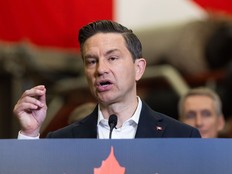EDITORIAL: PM’s view on good trade deal changed

Article content
We agree with Prime Minister Mark Carney that no deal with the U.S. on trade is better than a bad one, but the problem is Canadians have no idea about what he thinks a good deal is.
We do know that his definition of a good deal has changed over time.
Carney’s original position was that a good deal for Canada — the one he was aiming for — was an agreement which eliminated all U.S. tariffs announced by U.S. President Donald Trump.
But that’s no longer the case.
Carney said earlier this month such a deal was unlikely, given that all of Trump’s trade agreements to date with the U.K., Japan, Vietnam, Indonesia, the Philippines and now the European Union, which was announced on Sunday, contain baseline tariffs.
Responding to the announcement of Trump’s deal with the EU on Monday, Carney repeated his position that:
“The assurance for Canadian business, for Canadians, is we will only sign a deal that’s the right deal, that’s a good deal for Canada.”
RECOMMENDED VIDEO
He described Canada’s ongoing negotiations with the U.S. as complex and at an “intense phase,” given Trump’s threat to impose a 35% tariff on Canadian imports not compliant with the Canada-U.S.-Mexico Agreement (CUSMA) on Friday, if no deal is reached by then.
Trump agreed to CUSMA during his first term as president describing it at the time as the “the best (trade) agreement we’ve ever made.”
While most Canadian imports to the U.S. are CUSMA-compliant, the bigger concern for us is the separate sectoral tariffs Trump is imposing on Canadian steel, aluminum, automobiles, and copper.
On the possibility of a settlement resolving all these issues, Carney said, “there is a landing zone that’s possible, but we have to get there.”
If no agreement is reached, Carney will then have to decide whether to impose more counter-tariffs on the U.S. than he already has, keeping in mind that counter-tariffs are paid by Canadian consumers in higher prices for U.S. goods imported into Canada.
During the federal election, Carney’s campaign platform estimated these counter-tariffs would increase federal government revenue by $20 billion this fiscal year, money he promised to invest in industries and workers hardest hit by Trump’s tariffs.











Postmedia is committed to maintaining a lively but civil forum for discussion. Please keep comments relevant and respectful. Comments may take up to an hour to appear on the site. You will receive an email if there is a reply to your comment, an update to a thread you follow or if a user you follow comments. Visit our Community Guidelines for more information.